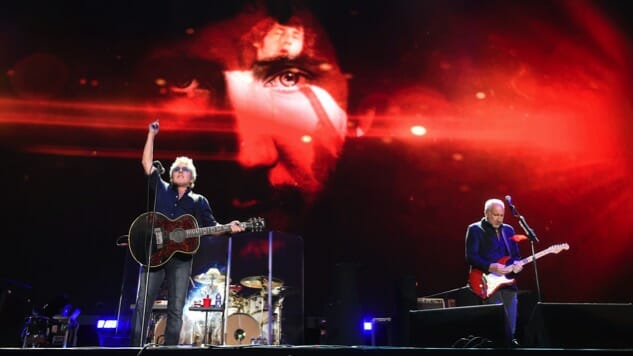Is Desert Trip the Way of the Future for Music Festivals, and Should It Happen Again in 2017?
Photo by Kevin Mazur, courtesy of Desert Trip
Now that the dust has settled and Desert Trip’s second weekend is officially in the books, we can take a step back from the massive festival and muse on what—if anything—it means for the industry as a whole.
The lineup obviously targeted Baby Boomers, but can the general concept of Desert Trip (whittle down the bill to six huge acts and spend your entire budget on them—in other words, quality over quantity) be applied to other music festivals? Are high-end, event festivals where fans shell out large sums of money for luxuries like seating, gourmet food and sets from two legendary artists a day the way of the future? Goldenvoice reportedly drew 75,000 people each night and grossed $160 million—nearly double what they made last year at Coachella—over the festival’s two weekends, making it the most lucrative music festival of all time. (Word on the street is each band took home $14 million for the gig.)
So yes, of course, it was a success. But is it one that should be imitated or replicated?
-

-

-

-

-

-

-

-

-

-

-

-

-

-

-

-

-

-

-

-

-

-

-

-

-

-

-

-

-

-

-

-

-

-

-

-

-

-

-

-








































